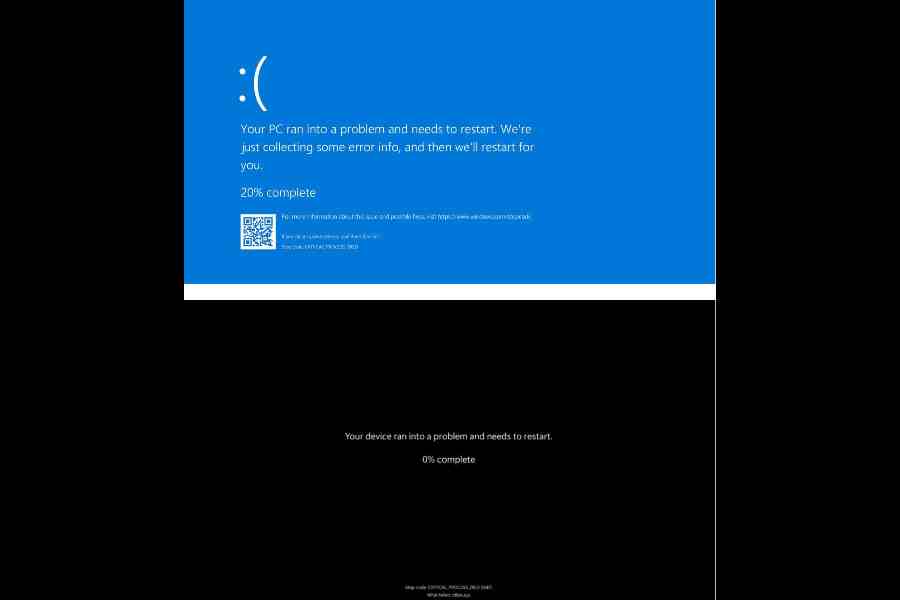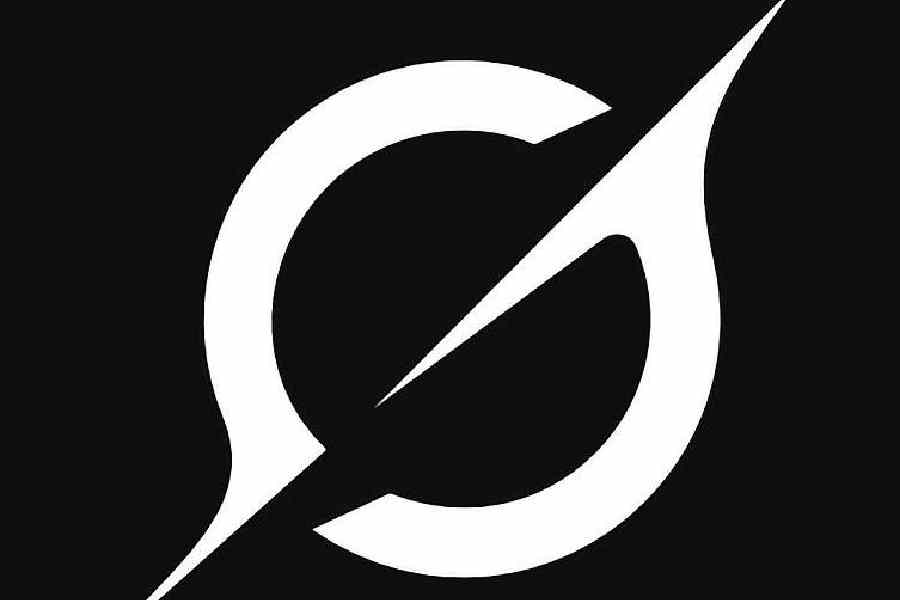Windows’ blue blues will soon look as black as night. The Blue Screen of Death (BSOD), which has been around for decades, is being replaced by a black screen. The company said it was “streamlining the unexpected restart experience”.
Every Windows user has come across the infamous BSOD, especially last year when cybersecurity company CrowdStrike’s faulty update reached computers running the operating system. It caused machines to shut down and then endlessly reboot in what is called a “doom loop”.
The incident grounded flights, disrupted banking services and stopped work around the world. The tech disaster affected around 8.5 million Windows devices.
Named for its bright blue colour, the critical error screen and the text is sometimes accompanied by a frowning face made up of a colon and a left parenthesis — :(
The redesigned screen looks different, featuring plenty of blank space and a smaller font to dampen the sense of panic.
Microsoft says the new screen will begin appearing later this year on all Windows 11, version 24H2 devices.
“The updated UI improves readability and aligns better with Windows 11 design principles, while preserving the technical information on the screen for when it is needed,” said David Weston, vice-president, enterprise and OS security, Microsoft.
Because of certain added features, the new screen allows IT admins to tackle tricky situations easily instead of having to access the crash dumps off PCs and analyse them with tools like WinDbg to find out what could have caused the problem.
Blue screen errors have been around since the very first version of Windows in 1985, when Meta CEO Mark Zuckerberg was a baby and the Iron Curtain was in place. The “blue screen” we are familiar with appeared in the early 1990s, Microsoft developer Raymond Chen wrote in a blog post.
Over time, the BSOD has become a part of pop culture, with a subreddit dedicated to it, besides T-shirts and other items.
The notorious screen popped up during a demo of Windows 98 by Bill Gates after a scanner was connected to demonstrate the Plug and Play feature of the operating system. The crowd cheered and the company’s co-founder said: “That must be… er… that must be why we’re not shipping Windows 98 yet!”
According to Microsoft, companies such as Bitdefender, CrowdStrike and ESET, among others, have been collaborating with Microsoft on the project.
One of the objectives is to ensure that antivirus software can still monitor potentially malicious changes to a Windows PC without kernel access (the core of the operating system).
The Windows 11 24H2 release will show an improvement in the process of collecting “crash dump” reports after a failure that causes the system to restart; the change brings downtime to about two seconds for most users.











